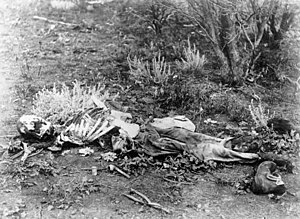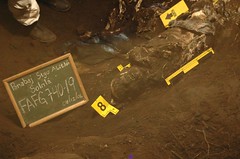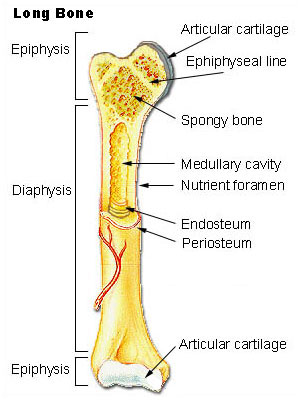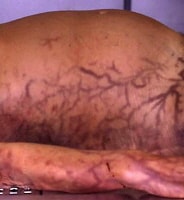| (Photo credit: Wikipedia) |
First of all - HOLY MOLY the list of horrible things that can go wrong far from help is long and daunting. What awesome plotting fodder. Things should never go easily for our heroes and heroines.
When faced with an emergency where professional help is anywhere from far away to non-existent, things just aren't looking good for your character. You can apply this information to a wilderness setting in your writing or to a natural disaster or terror activity in an urban center where resources have been stretched thin or destroyed.
I'm using my crack acting skills. Can you feel my pain?
PMS is your friend -- no, honestly.
PMS stands for:
- Pulse
- Motor (ability to move)
- Sensory (Can you feel this?)
Your character needs to check these at the beginning and the end of the first aid application to make sure they didn't do something that would make the situation worse. What? Your character made it worse? Hmm. Interesting plot twist.
For other cool acronyms that your character would know if they have advanced (more than band-aids and "Stay calm, I've called 911") first-aid capabilities go HERE.
Do NOT use paracord to tourniquet a limb unless the pressure is dispersed by a wider fabric. Your character can do a lot of harm. Use something that is wider, at least a few inches wide. (more about paracord and survival HERE)
Do NOT - put sticking-out bones back in the skin. Same with sticking-out organs, for that matter. Cover them with sterile water-soaked fabric. Remember this phrase -- Sticking out? Leave it out.
Do NOT - pull sticking-out objects that impaled the victim out of the victim. Your character should brace the object and keep it in place until the victim has medical support. Remember this phrase --If it's in - leave it in.
Being knotty is good.
Knots are important and can be oh so helpful. (Go HERE for an article on knots) This class added to my knot repertoire, but I realize I need more. Did your character learn to tie knots as a Girl Scout? Guess what? They're easily forgotten. Your character needs to practice them to keep them handy. This can be written into the plot line with any little thing - even a perfectly tied up tomato plant in the garden that caught someone's attention could lead to a conversation about why they have this skill.
- "I raced sailboats from the time I could walk."
- "My family was big into camping, and I spent most of my youthful weekends around a campfire tying knots and listening to stories."
- "I'm an Army Ranger, I dream knot sequences."
This is the new knot I learned -- a Prusik Knot:
How cool is that?
- It can help someone climb out of a bad place.
- It can keep someone who's going after and injured person from falling into a bad place.
- It can tie up a tarp to protect the victim from heat stroke, or rain...
- It can be used to create a traction splint for a broken femur so the bone parts don't migrate out through the skin, sever the femoral artery and have your character bleed out. (yeah - gross.)
Below is a video of a traction splint. You're not going to have one of these in the wild. Your character will have to devise what she can from what she finds or happens to have carried in with her. Remember, the more trained your characters, the better they will equip themselves and the better they will function. You get Joe-everyday back in the woods for a first time hike or Suzy-running-for-her-life in the jungle, and you've got problems. (Yay!)
If your character is well trained, find information on how to properly apply first-aid with the right equipment, then figure out interesting new ways to make this happen. If you need some ideas look under the Saving Your Heroine tab to see this in action with tampons, condoms, cans of Coke, dental floss, and others.
Also, if your character knows what they're doing, they probably had plans in place for themselves and their children. In this HUG A TREE article, I included videos I made about helping a tracker to find you, giving notice to the rangers, and packing a basic hiking bag that even kids should carry.
People are freaking heavy.
 Just sayin' In the movies when they throw the 200 pound man over the shoulder and are running and gunning their way out of a situation - well, that's theater; unless of course, your character is highly trained and in top physical condition. Let's just say if you think that's how I'm getting you down the trail, it ain't gonna happen. If push comes to shove (and it may look like just that) PERHAPS I could devise a way to yank you by the foot down the trail. BUT doing something like that would put me at risk of injury. What? Now both of your characters are down for the count? tsk tsk tsk - what a plot twist!
Just sayin' In the movies when they throw the 200 pound man over the shoulder and are running and gunning their way out of a situation - well, that's theater; unless of course, your character is highly trained and in top physical condition. Let's just say if you think that's how I'm getting you down the trail, it ain't gonna happen. If push comes to shove (and it may look like just that) PERHAPS I could devise a way to yank you by the foot down the trail. BUT doing something like that would put me at risk of injury. What? Now both of your characters are down for the count? tsk tsk tsk - what a plot twist!
My point here was - people are heavy. At one stage of a rescue, my job was to shift -- NOT LIFT -- just shift a guy up the back board with the help of two other people. That was a hard earned two inches of movement.
While we were encouraged to get the person to the rescue workers, if I'm alone, I'm going to try to get you safe and comfortable then I'll jog out and find help (marking my trail so we can find you). Seventy pounds is about my drag-your-butt-out-of-there limit.
The Corporal's Corner
To actually move someone a short distance -- say up a hill and back down -- it takes eight.
I hope this was helpful as you plot your next great novel!
- The victim is strapped in place and ties are put in such a way that the victim won't slide out the top or bottom - your rescuer forgot? WHOOPS!
- The head is protected with a blanket/jacket/whatever-is-handy if the victim had any spinal or head trauma.
- Three people stand on either side of the backboard/hastily-constructed carrier.
- Two more people stand at the head of the carrier system.
- The top right person is lead (this rotates through each pass) They say, "Ready?" (waits for confirmation from two standing in front) "Pass."
- The carrier is moved up to the hands of the two in front. The two in the back run around the outside to now be front people. The leader is now the new person at the top on the victim's right hand side. Two people are in front and thus oh so very slowly is the victim passed fire-bucket-brigade-style up and down a hill. When on flat ground they can just grab hold and walk.
- Any extra people who are around can act as balancers, watchers of holes, and rotate in to give relief.
- Everyone should be very quiet and focused so commands can be heard and heeded. What? Too much noise and they missed that there was a hole? The whole rescue team is now in a pile at the bottom of the hill? tsk tsk tsk. Now there's a plot twist (and an ankle twist. . .)
"Ready - Transfer" in action
I hope this was helpful as you plot your next great novel!
A HUGE thank you to CERT (for more information go HERE) and instructors Bill and Ray who were incredibly patient and knowledgeable.
And as always, a big thank you ThrillWriters and readers for stopping by. Thank you, too, for your support. When you buy my books, you make it possible for me to continue to bring you helpful articles and keep ThrillWriting free and accessible to all.


























